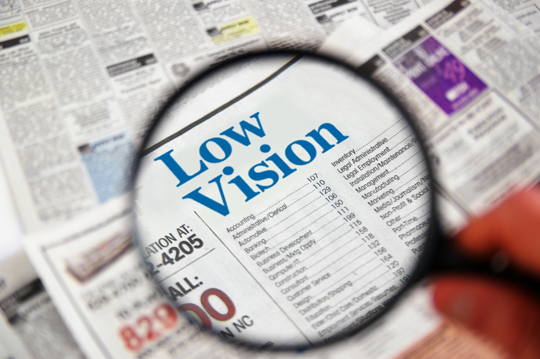Best corrected visual acuity of 6/18 or less and / or field of vision of 10 degree or less. People who are unable to see objects (say a person's face) beyond maximum of 3m i.e., 10 feet distance (with their spectacle correction) and / or people those who have side vision difficulty are said to have low vision.
When ordinary eye glasses, contact lenses or intraocular lens implants cannot provide sharp sight, an individual is said to have low vision. Although reduced central or reading vision is common, low vision may also result from decreased side (peripheral) vision, a reduction or loss of clarity of vision, or the eye's inability to properly adjust to light or glare.
The Clinic helps in enhancing the existing potential vision of the patients.

